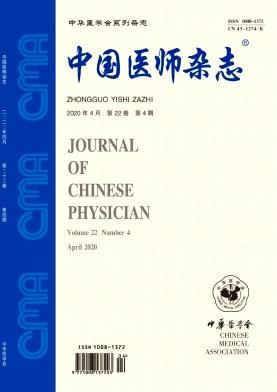The correlation of diffusional kurtosis imaging parameters with cognitive function and cytokine secretion in patients with Alzheimer's disease
Q4 Medicine
引用次数: 0
Abstract
Objective To detect the diffusional kurtosis imaging (DKI) parameters of patients with Alzheimer's disease (AD), and evaluate the inner link of DKI parameters with cognitive function and serum nerve injury index. Methods 78 patients who were first diagnosed with AD in our hospital between December 2015 and January 2018 were enrolled in AD group, and 50 healthy volunteers who had physical examination in our hospital during the same period were enrolled in normal control group. The corpus callosum DKI parameters [mean kurtosis (MK), axial kurtosis (AK) and radial kurtosis (RK)] values, Mini-Mental State Examination (MMSE) score as well as serum nerve damage indexes [β amyloid 1-42 (Aβ1-422), S100B protein (S100B) and brain-derived neurotrophic factor (BDNF)] were compared between the two groups of subjects. Pearson test was used to evaluate the correlation of DKI parameters with MMSE score as well as serum nerve injury index in patients with AD. Results MK, AK and RK levels in AD group were lower than those in normal control group; MMSE score was lower than that of normal control group; serum Aβ1-42 and S100B contents were higher than those of normal control group while BDNF content was lower than that of normal control group (P<0.05). Correlation analysis revealed that the MK, AK and RK values in AD patients were directly correlated with the MMSE score as well as Aβ1-42, S100B and BDNF levels (P<0.05). Conclusions The corpus callosum DKI parameter levels decrease in AD patients, and the specific levels are closely related to the severity of cognitive function and nerve injury, which may be one of the effective methods for early assessment of AD condition. Key words: Alzheimer disease; Corpus callosum; Diffusion magnetic resonance imaging; Cognition; Cytokines阿尔茨海默病患者弥散峰度成像参数与认知功能和细胞因子分泌的相关性
目的检测阿尔茨海默病(AD)患者弥漫性峰度成像(DKI)参数,探讨DKI参数与认知功能及血清神经损伤指数的内在联系。方法将2015年12月至2018年1月在我院首次诊断为AD的患者78例作为AD组,将同期在我院体检的健康志愿者50例作为正常对照组。比较两组受试者胼胝体DKI参数[平均峰度(MK)、轴向峰度(AK)和径向峰度(RK)]值、最小精神状态检查(MMSE)评分以及血清神经损伤指标[β淀粉样蛋白1-42 (Aβ1-422)、S100B蛋白(S100B)和脑源性神经营养因子(BDNF)]。采用Pearson检验评价AD患者DKI参数与MMSE评分及血清神经损伤指数的相关性。结果AD组MK、AK、RK水平低于正常对照组;MMSE评分低于正常对照组;血清a - β1-42和S100B含量高于正常对照组,BDNF含量低于正常对照组(P<0.05)。相关分析显示,AD患者MK、AK、RK值与MMSE评分及Aβ1-42、S100B、BDNF水平直接相关(P<0.05)。结论AD患者胼胝体DKI参数水平下降,具体水平与认知功能和神经损伤程度密切相关,可能是早期评估AD病情的有效方法之一。关键词:阿尔茨海默病;胼胝体;扩散磁共振成像;认知;细胞因子
本文章由计算机程序翻译,如有差异,请以英文原文为准。
求助全文
约1分钟内获得全文
求助全文

 求助内容:
求助内容: 应助结果提醒方式:
应助结果提醒方式:


